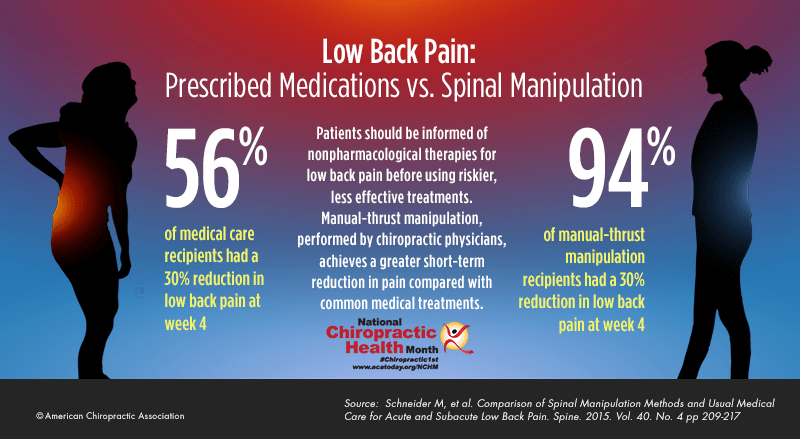Chiropractic Research Review 2015
SOURCE: Practice Analysis of Chiropractic 2015 (Chapter 2)
National Board of Chiropractic Examiners (NBCE)
Introduction
Healthcare services are provided by a practitioner in response to each patient’s expressed health concerns. Critical in this process are: the knowledge and experience of the practitioner, the preferences and values of the patient, and the empirical evidence concerning the appropriate care for the patient’s health condition. [1] This chapter focuses on the current state of scientific evidence regarding chiropractic care. The use of empirical evidence to guide practice is frequently called “evidence-based practice,” or “evidence-informed care.” Evidence-based practice was defined by one of the leading pioneers of the evidence-based movement, David Sackett, as “the conscientious, explicit and judicious use of current best evidence in making decisions about the care of individual patients”. [2]
Because the types of chiropractic research investigations have expanded, this chapter addresses not only clinical and basic science research, but also cost analysis, patient safety, and patient satisfaction. To effectively organize this research evidence, this chapter is primarily focused on findings from systematic reviews and meta-analyses, which combine results from many investigations to provide summaries of evidence in a specific area of healthcare.
Through the application of evidence-based practice principles, chiropractors rely, in part, upon research when making decisions about the care of their individual patients. Likewise, policymakers require evidence on which they can base decisions regarding policies to facilitate improved health outcomes. Additionally, patients depend on their doctors to have knowledge of the best available evidence within their discipline. Therefore, it is important to understand the depth and breadth of the chiropractic evidence base, while also noting the limitations and challenges of the state of evidence. Thus, this chapter is designed to provide evidence which may enhance decision-making by doctors of chiropractic and other health professionals, patients, educators, policymakers, and payors.
Evidence that informs chiropractic practice ranges from systematic reviews/meta-analyses and randomized clinical trials to observational and case-control studies, as well as mechanical force investigations and animal studies. This chapter provides an overview of the most recent and highest quality research evidence, but is not an exhaustive listing of all studies. Additional information and discussions of other research efforts are available in Chapter 2 of the Practice Analysis of Chiropractic 2010, as well as the Job Analysis of Chiropractic 2005, 2000, and 1993. [3-6]
Clinical Effectiveness
There are more articles like this @ our:
Back Pain
The number and methodological quality of studies investigating spinal manipulation for the treatment of low back pain have steadily increased over the past decade. Numerous systematic reviews have summarized the evidence pertaining to the effectiveness of spinal manipulation for low back pain. The majority of these reviews have demonstrated that spinal manipulation has a consistent treatment effect equivalent to, and sometimes better than, other commonly used therapies for chronic and acute low back pain. Several recent systematic reviews evaluating the effectiveness of spinal manipulation techniques for low back pain are summarized below. It is important to note that not all of these studies included treatment by a doctor of chiropractic. However, they all focus on spinal manipulation, the cornerstone of chiropractic care.
Efficacy of Manipulation versus Sham or No Treatment
The Agency for Healthcare Research and Quality (AHRQ) has concluded that spinal manipulation confers significant clinical benefit in reducing pain and improving function for those with chronic nonspecific low back pain. In fact, spinal manipulative therapy was significantly more effective at reducing pain in the short-term when compared to placebo or no treatment. [7]
Read the rest of this Full Text article now!





Leave A Comment